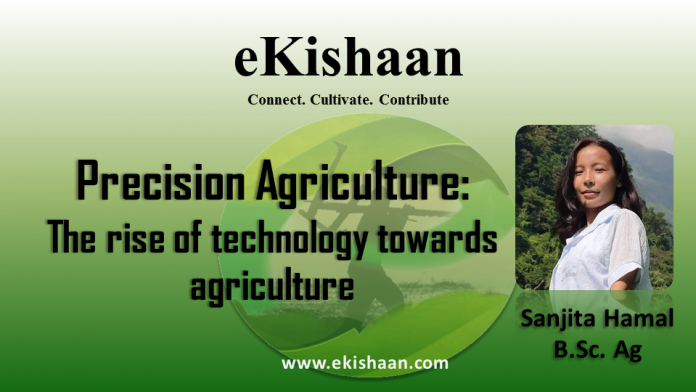Precision Agriculture: The rise of technology towards agriculture
Agriculture is the mainstay of Nepal comprised of about 60.4% of the population in farming. With population growth exceeding growth in agricultural production, Nepal is still facing the problem of food deficit. Nepal imported food worth NRs. 243 billion in the last fiscal year 2019/20 which pushes the country towards food insecurity. Climate change is also posing a great threat to agricultural production influencing the food security and livelihood of people.
To appease the demands of food, many new practices and technologies are being identified and incorporated in the agriculture domain. Instead of becoming food secure, the natural resources are overexploited leading to their depletion. This predicament calls for revolutionary change in the agriculture system using modern methods of farming like Precision agriculture.
Precision agriculture is an approach to a farm management system based on observing, analyzing the variability within the field to allocate the inputs according to the actual field or crop requirement. Precision agriculture incorporates advanced technologies for assessing site-specific differences and responding to them systematically, hence it is also called Site-specific crop management system (SSCM) or satellite farming.
The main aim of precision agriculture is to ensure profitability, efficiency, and sustainability with minimum impacts on the environment. It involves a precise application of inputs at the right place, at the right time, and in the right amount to minimize the production cost and reduce environmental impact. Usually, there is minute variability in soil and crop within a field. Precision agriculture allows farmers to observe the problem of the specific sites in the field and address them by applying precise input like using precise land leveling, seeding, fertilizer application, pesticide application, and irrigation. Such activities of farmers help to reduce the wastage of resources by utilizing the limited available resources. These innovations have made it possible to produce more with less.
Precision agriculture entirely relies on the use of sophisticated technologies such as GPS, GIS, VRT, remote sensing, yield monitors, proximate sensors, robots, drones, etc. Global Positioning System (GPS) is a satellite-based radio navigation system that helps in identifying any location in the field to assess the spatial variability and site-specific application of inputs. Geographical Information System (GIS) is used for storing, analyzing, and displaying data in the map-like form to exhibit the differences within the field. Variable-rate technologies (VRT) is any technology that enables the variable‐rate application of agricultural inputs like seed, fertilizers, water, pesticides, etc according to the requirement of a specific location.
Remote sensing is used to collect data and information by using electromagnetic waves for assessing crop conditions, estimating crop acreage, soil mapping, identifying pest and disease-infested plants, monitoring irrigation and other stress conditions. A yield monitor helps to quantify the crop yield with the device installed on the machines. With the application of such devices, farmers can easily access the data about the status of field and plant parameters at all times which helps them in monitoring and managing operations.
Nepal, rich in biodiversity has great potential for increasing agricultural productivity. In the name of increasing productivity, we are adopting resource-intensive and unsustainable practices. So it is essential to make a breakthrough in the agriculture sector which can be possible by integrating technology in agriculture i.e. by the adoption of Precision agriculture.
Precision agriculture helps in maximum utilization of available resources by reducing human efforts. Nepalese farmers are still lagging in the use of technology in crop production. Though some practices such as drip irrigation, sprinkler irrigation, hydroponics are in trend but there is a need for high technological advancement in Nepal.
Many factors are limiting the implementation of precision agriculture in Nepal like land fragmentation, expensiveness, reluctance to change, lack of subsidies, technical experts, and support from the government. Considering these limitations opportunities should be created to allure farmers towards precision agriculture. The government should facilitate the use of such practices by implementing effective plans and policies along with subsidized programs. Likewise familiarizing people about the potential of such technology and promoting their skill development is imperative for the expansion of precision agriculture in Nepal.
